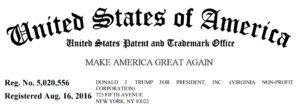USPTO’s new Financial Manager system is supposed to be a replacement to the much-loved system that came before, called Financial Profile. For many many years FP would let the user do a search for transactions of interest and the search could, if desired, be carried out across all possible payment methods.
For our billing staff an example of a daily recurring task was to do a search looking for all of the payments that happened since two days ago, across all of our (approximately a dozen) payment methods.
With FP this was a matter of a few mouse clicks.
And of course what the designers of FM were supposed to do (but did not do very well) was to replicate the user functions of FP in FM. Unfortunately when USPTO released FM, the FM system did not permit any search across all payment methods. It meant for example that our billing staff were forced to do about a dozen searches each day instead of a single search, so as to identify all of the transactions that had happened in the past day or two.
One annoying aspect of FM was that when USPTO released FM, on April 8, 2016, USPTO shut down FP. So if some important feature in FP was missing from FM, there was nothing the customer could do about it. USPTO should have kept FP running in parallel with FM until all of the features of FP had been migrated over to FM.
I blogged about this search-across-all-payment-methods deficiency on June 29, 2016.
I am delighted to be able to report that on August 10, USPTO finally migrated the search-across-all-payment-methods feature to FM.
For four months (starting with the abrupt shut-down of FP), customers were denied the feature. But now the feature is back.
This is a welcome development.
Now let’s hope that the USPTO folks can keep up the good work, providing for example the user features that I detailed in this blog article on June 22, 2016.
 ces of Allowance.
ces of Allowance.